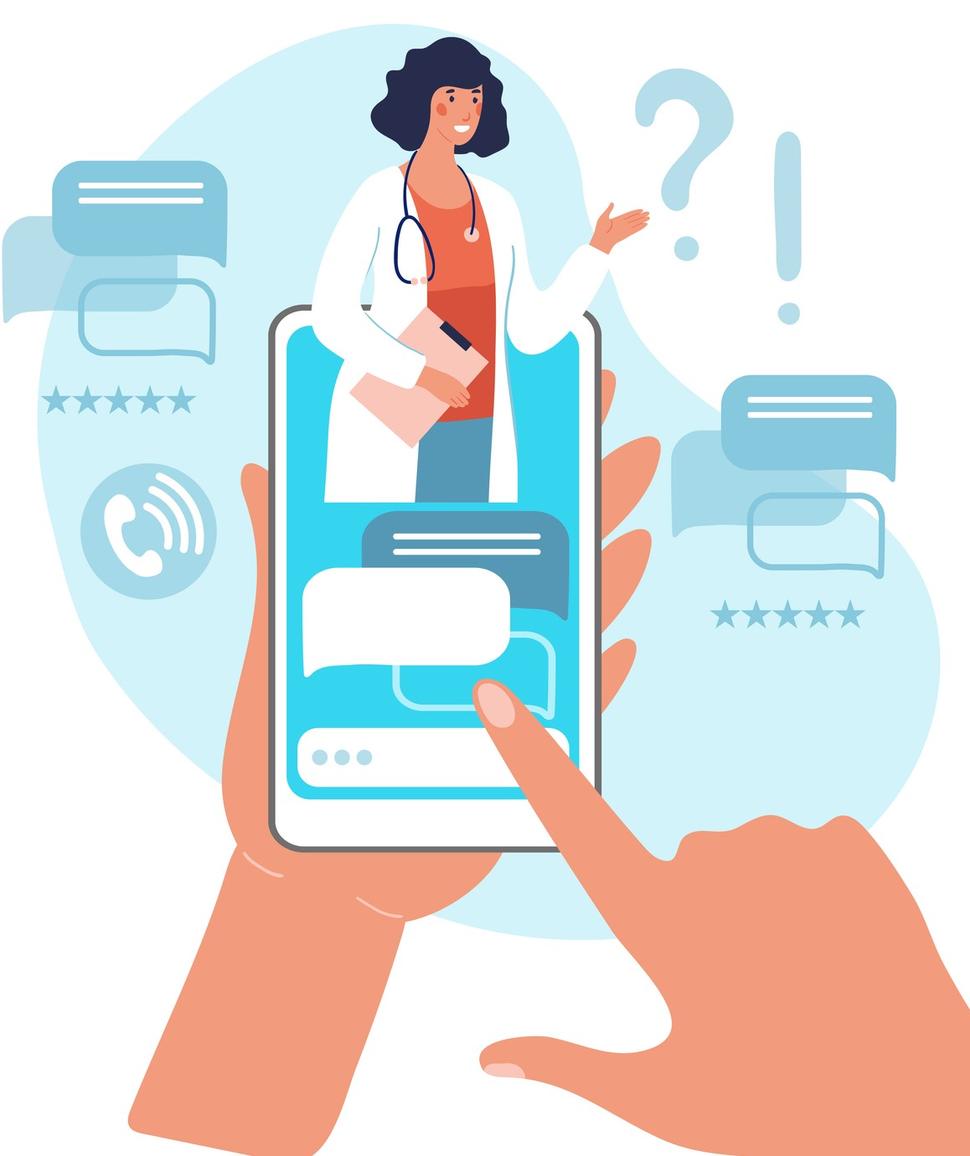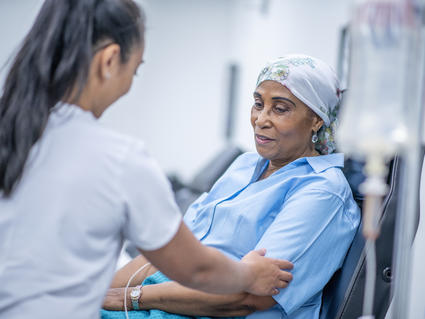Help Desk for Oncologists Treating People with a Rare Leukemia Pays Big Dividends
, by Carmen Phillips
It was nearly 15 years ago when Anand Jillella, M.D., and his colleagues at the Georgia Cancer Center recognized a serious problem at their hospital. Between 2005 and 2009, 19 patients with acute promyelocytic leukemia (APL) had been treated there and 7 had died within a month of beginning treatment.
“It was very frustrating,” Dr. Jillella said, because APL, a very rare form of acute myeloid leukemia (AML), is highly curable.
In clinical trials involving people with APL, the participating oncologists are experts in the disease and very experienced with the nuances of its treatment. The primary challenge in treating APL is getting patients through the initial phase of treatment, called induction therapy, which can cause serious, often fatal complications.
In recent APL clinical trials, “95% to 98% [of patients] are cured and are long-term survivors,” Dr. Jillella explained recently at the 2022 American Society for Hematology (ASH) annual meeting. Fewer than 5% of patients die within the first month.
In the real world, however, it’s a different story. “About 20% to 30% of patients do not survive induction [therapy],” he said.
Now, an NCI-funded clinical trial led by Dr. Jillella and his colleague Vamsi Kota, M.D., has shown that there’s a way to nearly eliminate these early deaths.
The rate of early deaths in the trial was only 3.5%, Dr. Jillella reported at the ASH meeting—even though the majority of the patients were treated at smaller community hospitals, where oncologists rarely encounter APL. And many patients were older or had other health problems, both of which increase the risk of dying during induction therapy.
How did this remarkable improvement come about? Part of it was a result of a simple, two-page treatment algorithm—in effect, a checklist for how to treat APL, including recognizing and treating complications caused by induction therapy.
The other factor was an APL help desk staffed by Drs. Jillella, Kota, and a handful of other APL experts at large cancer centers across the country. These experts were available around the clock by phone or email to other oncologists who were treating a patient with APL.
The help desk was of particular importance when a patient going through induction therapy started having signs of a potentially dangerous complication. The treating oncologist could then reach out to a member of the expert team to work through the patient's problems and determine the best way to address them.
“A system that uses a standardized algorithm and … expert support is really important in decreasing early deaths and increasing overall survival,” Dr. Jillella said during a presentation of the trial results at the ASH meeting.
Patients with APL are rare encounters for many oncologists
APL is rare, with only about 3,000 people diagnosed each year in the United States. The standard treatment for the disease is a combination of two drugs, all-trans retinoic acid and arsenic trioxide.
While this treatment approach is extremely effective in eradicating APL, it comes with a hitch: a collection of unusual side effects. They include internal bleeding and a constellation of complications—from a cough or fever to severe kidney problems—collectively called differentiation syndrome.
These problems can quickly turn from mild to fatal. However, the cancer is so uncommon that many oncologists rarely, if ever, see a patient with APL, Dr. Jillella noted. As a consequence, they aren’t familiar with how to recognize or treat these unique complications.
From a short APL treatment checklist to a large NCORP trial
This clinical trial was borne of frustration. It began with the analysis by Drs. Jillella, Kota, and colleagues at several nearby hospitals that revealed an excess of early deaths among people treated for APL at their institutions.
To address the problem, first they created a comprehensive treatment guideline for APL. Soon after, they created a simplified two-page algorithm. In addition, it was decided that only Drs. Jillella and Kota, who had the most experience with treating APL, would manage patients with the disease at the hospital.
The changes worked, almost eliminating early deaths among the next 10 patients with APL treated there.
They shared the guidelines and algorithm with other hospitals in the region. And they made an additional offer to the hospitals. “If you have any APL patients, call us, and we’ll help,” Dr. Jillella recounted.
That effort led to a small, regional pilot trial testing the algorithm and help desk. Based on the success of that trial, in which the early death rate was 8.5%, a larger trial was developed.
The nationwide trial was run through the NCI Community Oncology Research Program (NCORP). The trial's help desk team included seven APL experts from six large academic cancer centers. Oncologists at more than 290 community cancer centers that are part of NCORP were able to participate.
“NCORP was established to allow clinical trials to expand beyond academic cancer centers and come into the communities where most people with cancer are treated,” said Cecilia Lee, Dr.Ph., R.N., of NCI’s Division of Cancer Prevention, who oversees several NCORP trials. This trial “is a perfect example of how NCORP facilitates academic–community center partnerships.”
95% of patients alive at 1 year
Just over 200 patients were enrolled in the trial, which was led by the ECOG-ACRIN Cancer Research Group. About 70% of the patients were treated at NCORP community cancer centers, with the remainder treated at large, academic cancer centers.
For a patient to be eligible to participate, their treating oncologist had to contact a member of the APL expert team within 72 hours of initiating induction therapy.
The initial consultation established a treatment plan for the patient, explained Joseph Vadakara, M.D., an oncologist at Geisinger Cancer Center in Hershey, PA, one of the participating NCORP sites, which enrolled about 10 patients in the trial. Additional consultations involved discussions of potential signs of serious complications and how to best manage them.
“It allows you to become more confident in managing [APL] patients, knowing we could reach out to these experts,” Dr. Vadakara said.
Lisa Law, M.D., an oncologist from Kaiser Permanente Northern California who also participated in the trial, shared that sentiment.
“I had access to national experts with vast experience and [who] know the nuances of treating this challenging yet curable [cancer],” Dr. Law said. “It was very reassuring.”
Having experts available was particularly important, Dr. Jillella explained, because, unlike with most cancer clinical trials, patients weren’t excluded from participating in this trial because of their age or other health problems. In fact, based on the typical criteria used in most cancer clinical trials, about 20% of patients in the study would not have been allowed to enroll, Dr. Jillella explained.
“This was a very sick group of patients,” he said.
Overall, only seven people died while receiving induction therapy, all due to differentiation syndrome, he reported at the ASH meeting. Of those, six were aged 69 or older. There was no difference in the rate of deaths at academic versus community hospitals.
About 95% of participants were still alive at 1 year.
Early deaths in people with APL, “in my very, very humble opinion, are mostly preventable,” Dr. Jillella said.
Can this approach work for other cancers, in everyday care?
Frequently, oncologists at community cancer centers reach out informally to experts at large academic centers for advice about how to best manage patients with rare or difficult-to-treat cancers, Dr. Vadakara said.
The trial’s results show that a more formal process can be very effective, he continued. But whether a more formal process can be done for other cancers, or as a part of routine care outside of a clinical trial, is another matter.
It would require “having enough experts who are willing to [participate],” he said. For more common cancers, like lung or breast, because of the sheer number of people with these cancers, it’s probably not feasible. But for rare cancers like APL, “it’s definitely doable,” he said.
According to Selina Luger, M.D., of the University of Pennsylvania Abramson Cancer Center and a member of the trial’s APL expert group, the trial provides an important foundation to build on.
"This [treatment] model provides us with a framework to enhance the care of patients with other complex diseases who cannot participate in clinical trials or travel to academic medical centers," Dr. Luger said in a news release.
Dr. Law agreed, explaining that commonly used treatments for AML, for example, also have side effects that are difficult to recognize and manage. When treating such patients, she continued, many community oncologists “may benefit from having access to similar expert guidance.”

